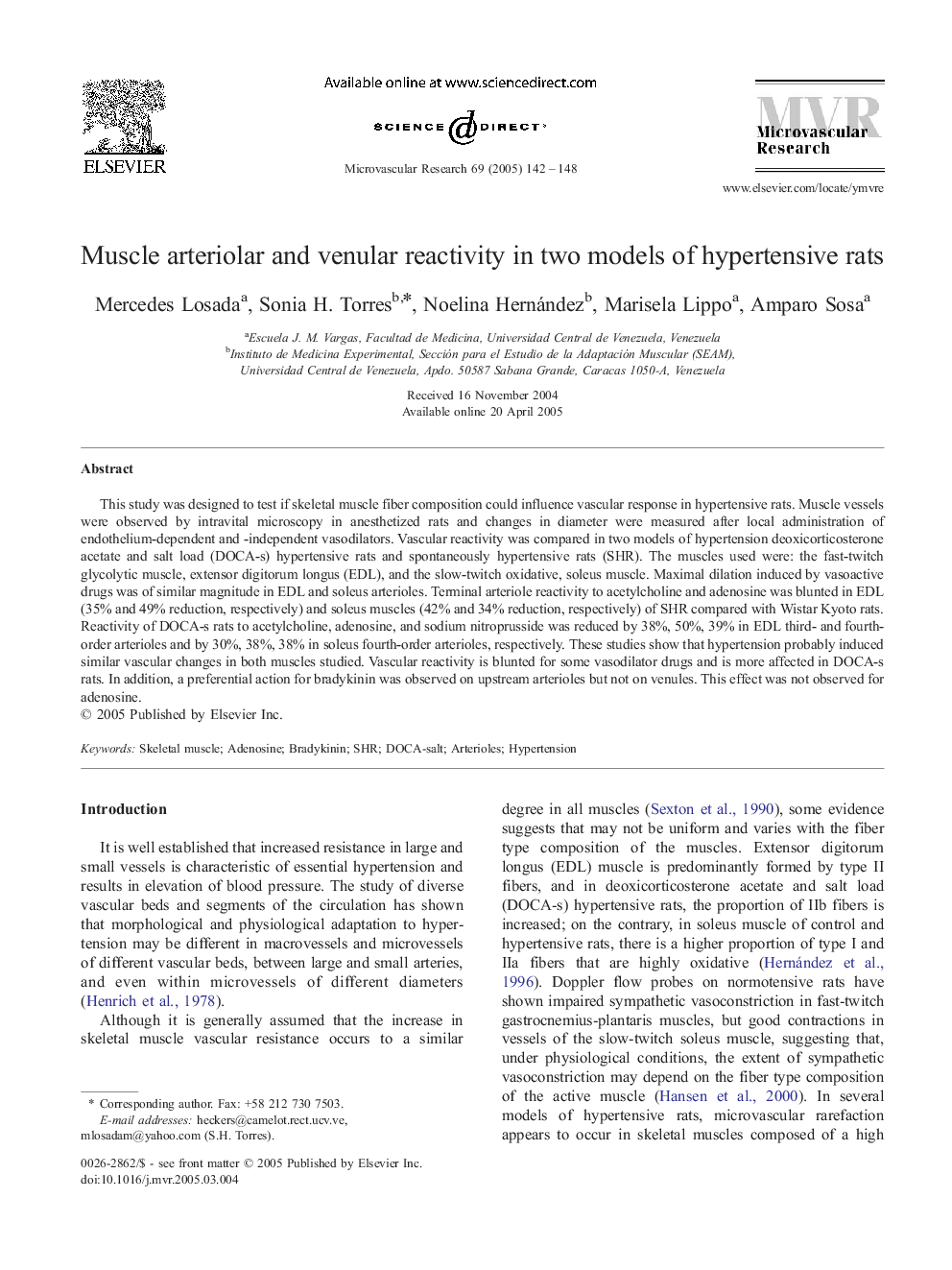| Article ID | Journal | Published Year | Pages | File Type |
|---|---|---|---|---|
| 10827315 | Microvascular Research | 2005 | 7 Pages |
Abstract
This study was designed to test if skeletal muscle fiber composition could influence vascular response in hypertensive rats. Muscle vessels were observed by intravital microscopy in anesthetized rats and changes in diameter were measured after local administration of endothelium-dependent and -independent vasodilators. Vascular reactivity was compared in two models of hypertension deoxicorticosterone acetate and salt load (DOCA-s) hypertensive rats and spontaneously hypertensive rats (SHR). The muscles used were: the fast-twitch glycolytic muscle, extensor digitorum longus (EDL), and the slow-twitch oxidative, soleus muscle. Maximal dilation induced by vasoactive drugs was of similar magnitude in EDL and soleus arterioles. Terminal arteriole reactivity to acetylcholine and adenosine was blunted in EDL (35% and 49% reduction, respectively) and soleus muscles (42% and 34% reduction, respectively) of SHR compared with Wistar Kyoto rats. Reactivity of DOCA-s rats to acetylcholine, adenosine, and sodium nitroprusside was reduced by 38%, 50%, 39% in EDL third- and fourth-order arterioles and by 30%, 38%, 38% in soleus fourth-order arterioles, respectively. These studies show that hypertension probably induced similar vascular changes in both muscles studied. Vascular reactivity is blunted for some vasodilator drugs and is more affected in DOCA-s rats. In addition, a preferential action for bradykinin was observed on upstream arterioles but not on venules. This effect was not observed for adenosine.
Related Topics
Life Sciences
Biochemistry, Genetics and Molecular Biology
Biochemistry
Authors
Mercedes Losada, Sonia H. Torres, Noelina Hernández, Marisela Lippo, Amparo Sosa,
